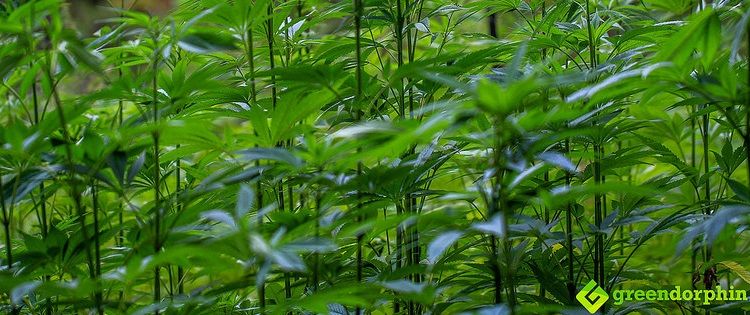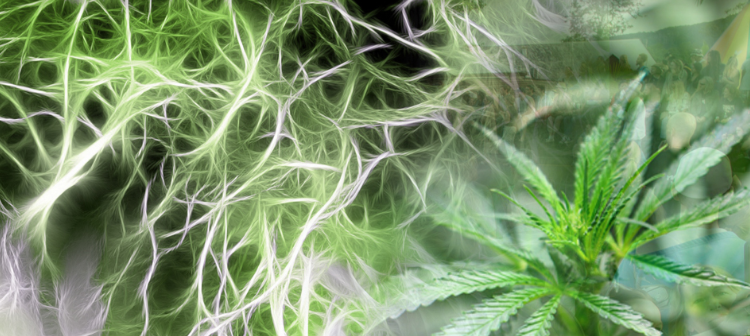If you have ever grown cannabis, chances are you have taken every opportunity to maximize the plant’s goodness. But maybe you haven’t ever thought about the root. Or maybe you have but haven’t known what to do with it.
The roots are in fact, a valuable piece of the plant. Many cultures have used cannabis root for therapy. The first use of hemp root was recorded in Chinese literature over 5,000 years ago. The Chinese used it first as a diuretic. Women also used the root to stop hemorrhaging right after giving birth.
The Roman Historian, Pliny also wrote about the medical uses of hemp root in his book Natural Histories. Written around the time of Christ, Pliny suggested boiling hemp root in water to treat joint stiffness, gout and placed raw topically to soothe burn wounds.
Azerbaijani tribespeople also used hemp root for a variety of medical uses including to treat wounds, fevers, toothaches, ulcers and abscesses.

That said, by the Middle Ages, in part because of the impact of a more formalized “Western” medical practice, many of these herbal cures, including cannabis, began to fade from use in Western medicine. In part, this was also the impact of the Catholic Church.
That said, herbal therapy began to find favor again during the Renaissance. In fact, physicians began to use the root, often in combination with other plants, as herbal remedies for medical problems including sciatica and pelvic joint pain as well as inflammations and even venereal disease.
In some parts of the world which still rely on herbal remedies, including South America, the use of the plant, including its root, has never really died out. That said, until recently, it survived as just that. Folk medicine.
With the rebirth of legalization, such usages are getting a new look.

What Can You Use Them For Today?
Cannabis roots do not contain very many cannabinoids (either THC or CBD). However, they are made up of lipids and sugars. When extracted via ethanol, it is also possible to obtain terpenes from the plant roots, which have their own health impacts and properties.
Friedelin
This is an antioxidant that protects the liver.
Epifriedelanol
This can prevent the growth of tumors.
Pentacyclic triterpene ketones
This can kill cancer cells, reduces inflammation and bacteria and can also act as a diuretic.
Choline
An essential nutrient that plays an important role in maintaining the health of cell membranes. Choline deficiency is often found in post-menopausal women. Drinking cannabis root tea can help.
Atropine
This can be used to relax the eye muscles. It also has anti-asthmatic properties.
What Are Terpenes?

This is a rapidly emerging field of cannabis research. Essentially terpenes are the essential oils of the plant. They appear to work with cannabinoids to create a greater therapeutic effect – what is sometimes known as the “Entourage Effect.”
Drinking teas and smelling aromas that work in conjunction with cannabinoids have been found to increase their effectiveness.
That is also one of the reasons that cannabis root is becoming more and more popular.
For more information on cannabis terpenes and the entourage effect, here are some short videos with Dr Teh, Cannabinoid Clinician explaining them in more details.
Cannabis Terpenes:
The Entourage Effect:
A Great Cup of Tea

Cannabis root tea is one of the most popular uses for this part of the plant today. We have spoken about Cannabis tea before, however, that was tea from the buds, not the roots.
Many commercial growers and dispensaries also provide cannabis root preparations to provide relief for a variety of ailments and disorders.
 Sita von Windheim, from CannaMed, Vancouver demonstrating cannabis roots extraction on stage at the 25th MardiGrass in Nimbin
Sita von Windheim, from CannaMed, Vancouver demonstrating cannabis roots extraction on stage at the 25th MardiGrass in Nimbin
However, this is also very easy to make at home. Just place dried and powdered hemp root in a slow cooker for 12 hours. Add anise, cinnamon and other aromatic herbs you like to drink. This is also a suggestion if you want to blunt the taste of hemp. After cook time, strain the liquid and drink.
Potential Risks
While the root of the plant is as nontoxic as the rest of it, it is important to be careful not to consume too much of the root extract. Too much of it can be toxic to the liver, due to the presence of the alkaloids pyrrolidine and piperidine.
These two alkaloids can also irritate the skin, mucous membranes, lungs and the stomach lining. For this reason, oral consumption of root tea is potentially riskier than topical application. Hemp root extract should not be consumed in its undiluted, extract form.
Have you tried using cannabis roots for any purpose?
Tell us in the comments section below.
- Guenter Weiglein – The Persevering Patient - July 7, 2017
- Dr Peace – A German Cannabis Doctor On The Go - July 5, 2017
- The German Marijuana Edibles Market - July 3, 2017


